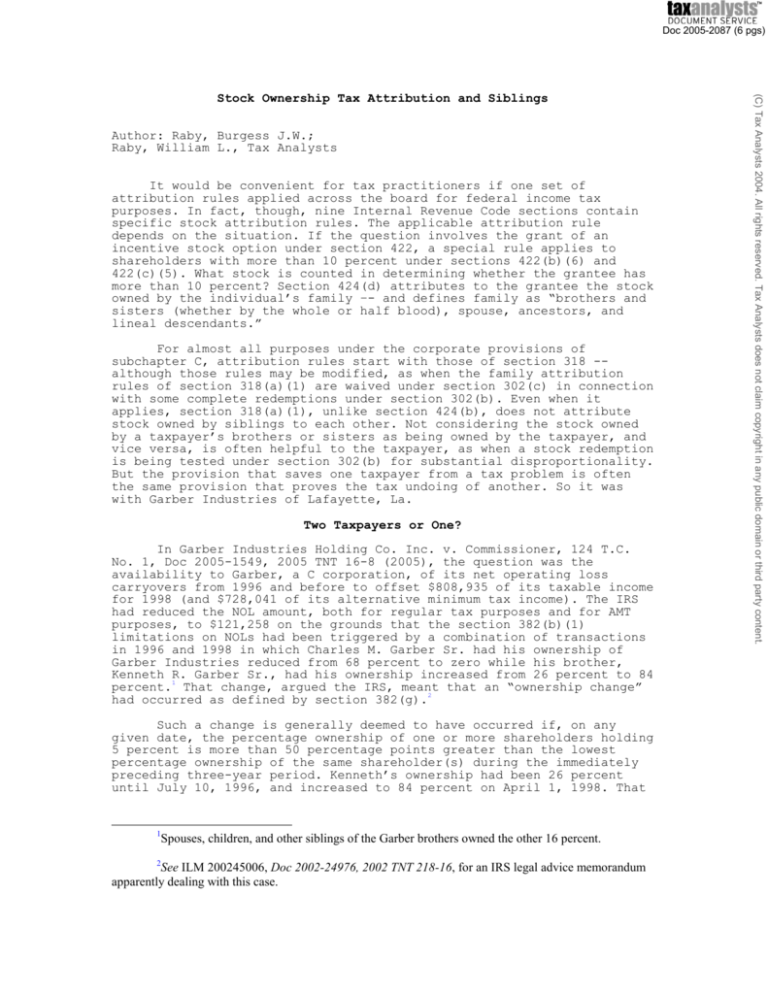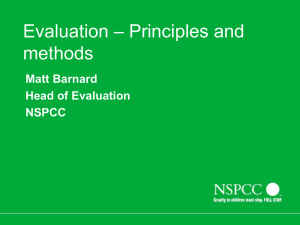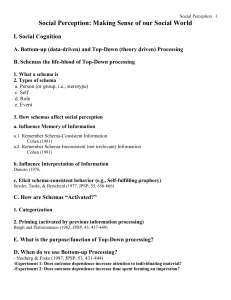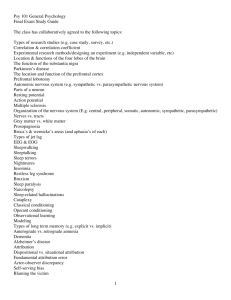
Doc 2005-2087 (6 pgs)
Author: Raby, Burgess J.W.;
Raby, William L., Tax Analysts
It would be convenient for tax practitioners if one set of
attribution rules applied across the board for federal income tax
purposes. In fact, though, nine Internal Revenue Code sections contain
specific stock attribution rules. The applicable attribution rule
depends on the situation. If the question involves the grant of an
incentive stock option under section 422, a special rule applies to
shareholders with more than 10 percent under sections 422(b)(6) and
422(c)(5). What stock is counted in determining whether the grantee has
more than 10 percent? Section 424(d) attributes to the grantee the stock
owned by the individual’s family –- and defines family as “brothers and
sisters (whether by the whole or half blood), spouse, ancestors, and
lineal descendants.”
For almost all purposes under the corporate provisions of
subchapter C, attribution rules start with those of section 318 -although those rules may be modified, as when the family attribution
rules of section 318(a)(1) are waived under section 302(c) in connection
with some complete redemptions under section 302(b). Even when it
applies, section 318(a)(1), unlike section 424(b), does not attribute
stock owned by siblings to each other. Not considering the stock owned
by a taxpayer’s brothers or sisters as being owned by the taxpayer, and
vice versa, is often helpful to the taxpayer, as when a stock redemption
is being tested under section 302(b) for substantial disproportionality.
But the provision that saves one taxpayer from a tax problem is often
the same provision that proves the tax undoing of another. So it was
with Garber Industries of Lafayette, La.
Two Taxpayers or One?
In Garber Industries Holding Co. Inc. v. Commissioner, 124 T.C.
No. 1, Doc 2005-1549, 2005 TNT 16-8 (2005), the question was the
availability to Garber, a C corporation, of its net operating loss
carryovers from 1996 and before to offset $808,935 of its taxable income
for 1998 (and $728,041 of its alternative minimum tax income). The IRS
had reduced the NOL amount, both for regular tax purposes and for AMT
purposes, to $121,258 on the grounds that the section 382(b)(1)
limitations on NOLs had been triggered by a combination of transactions
in 1996 and 1998 in which Charles M. Garber Sr. had his ownership of
Garber Industries reduced from 68 percent to zero while his brother,
Kenneth R. Garber Sr., had his ownership increased from 26 percent to 84
1
that an “ownership change”
percent. That change, argued the IRS, meant
2
had occurred as defined by section 382(g).
Such a change is generally deemed to have occurred if, on any
given date, the percentage ownership of one or more shareholders holding
5 percent is more than 50 percentage points greater than the lowest
percentage ownership of the same shareholder(s) during the immediately
preceding three-year period. Kenneth’s ownership had been 26 percent
until July 10, 1996, and increased to 84 percent on April 1, 1998. That
1
Spouses, children, and other siblings of the Garber brothers owned the other 16 percent.
2
See ILM 200245006, Doc 2002-24976, 2002 TNT 218-16, for an IRS legal advice memorandum
apparently dealing with this case.
(C) Tax Analysts 2004. All rights reserved. Tax Analysts does not claim copyright in any public domain or third party content.
Stock Ownership Tax Attribution and Siblings
Doc 2005-2087 (6 pgs)
Family Members -- Up and Down the Family Tree
The corporation argued that Charles and Kenneth were members of
the same family. Therefore, the stock owned by the family group had not
changed as a result of the sale from one brother to another. As support,
it cited section 382(l)(3)(A)(I), which provides that “an individual and
all members of his family described in paragraph (1) of section 318(a)
shall be treated as one individual for purposes of applying this
section.” The IRS’s response was to point to the language of section
318(a)(1)(A), defining members of a family as including (i) an
individual’s “spouse (other than a spouse who is legally separated from
the individual under a decree of divorce or separate maintenance), and
(ii) his children, grandchildren, and parents.” That does not include
“brothers and sisters,” the IRS said.
Garber Industries admitted that, at first glance, the IRS might
appear to be correct. But closer analysis, the corporation suggested,
would show that:
although siblings are not family members described in section
318(a)(1), Charles and Kenneth are nonetheless members of the same
family when such determination is made by reference to their
parents and grandparents. That is, as sons, they are both members
of each family consisting of a parent and that parent’s family
members. . . . Accordingly, . . . Charles and Kenneth are treated
as one individual under section 382(l)(3)(A)(I), with the result
that transactions between them are disregarded for purposes of
section 382.
Even if that analysis were valid, responded the IRS, it still
would apply only with reference to living individuals. None of the
Garber parents or grandparents had been alive at any time during the
three-year testing period, so there was no living individual during that
time whose family members could be treated as including both Charles and
Kenneth.
Tax Court Judge James S. Halpern admitted that the application of
section 318 to brothers in the context of section 382 was “a matter of
first impression for this Court.” He conceded early in his opinion that:
the language of section 382(l)(3)(A)(I) can variably (and
reasonably) be interpreted as being consistent with each party’s
position in this case. That is, there is nothing in the language
of the statute that would make either party’s position patently
untenable. . . . Because the answer to our inquiry is not apparent
from the face of the statute, we may look beyond the language of
section 382(l)(3)(A)(I) for interpretive guidance.
The current section 382 structure was created in the Tax Reform
Act of 1986. That legislation, as in other areas of the law, introduced
new concepts and approaches to eliminate the marketing of corporate net
operating losses and other tax attributes. Thus, Judge Halpern could
find little help in the history of the prior section 382.
Reductio Ad Absurdum
What about the practical consequences if the taxpayer’s
interpretation was accepted? Judge Halpern found it difficult to believe
that Congress, without any mention of such an objective, intended by the
language it used in section 382 to expand the concept of the family of
an individual from not only his spouse, children, grandchildren, and
(C) Tax Analysts 2004. All rights reserved. Tax Analysts does not claim copyright in any public domain or third party content.
was more than a 50-point change, and July 1996 to April 1998 is far
shorter than three years.
Doc 2005-2087 (6 pgs)
As a member of each parent’s family (i.e., in his capacity as a
child of those parents), an individual would be aggregated with
his parents’ children (his siblings), grandchildren (his nephews
and nieces), and parents (his grandparents). As a member of his
spouse's family (i.e., in his capacity as her spouse), an
individual would be aggregated with his spouse’s parents (his
mother- and father-in-law). As a member of each child’s family
(i.e., in his capacity as a parent of those children), an
individual would be aggregated with each child’s spouse (his sonsand daughters-in-law) and grandchildren (his great-grandchildren).
As a member of each grandparent’s family (i.e., in his capacity as
a grandchild of those grandparents), an individual would be
aggregated with his grandparents’ children (his aunts and uncles),
grandchildren (his first cousins), and parents (his greatgrandparents). See secs. 382(l)(3)(A)(i), 318(a)(1).
And while Judge Halpern found such an expansion of “family”
difficult to accept, he found even more difficult the implications of
the IRS’s position that the focus had to be on living individuals:
First, it has the potential for being just as expansive as
petitioner’s interpretation. More importantly, respondent’s
interpretation leads to arbitrary distinctions. As relevant to
this case, respondent would have us believe that the ability of
siblings to sell loss corporation shares among themselves without
any section 382 consequences is wholly dependent on the continued
good health of their parents. We see no rational basis for
Congress’s having drawn a distinction in this context between
siblings whose parents happen to be living and those whose parents
happen to be deceased; the former are no more related than the
latter.
The Third Way
Neither interpretation made sense, concluded Judge Halpern.
Therefore he came up with a third approach that put the family group
focus solely on individuals who are shareholders of the loss
corporation:
Congress intended individuals to be aggregated with the same
family members to whom their shares would otherwise be attributed
under section 318(a)(1), which in turn suggests that Congress
intended the family aggregation rule to apply from the perspective
of individuals who are shareholders of the loss corporation. . . .
In other words, composite shareholders are to be constructed only
around individuals who directly or indirectly (through an entity
or by means of an option) own shares of the loss corporation.
Because neither the parents nor the grandparents of the two Garber
brothers had ever been shareholders in Garber Industries, that scuttled
the argument that Kenneth and Charles were members of one family group
that owned most or all of the stock at all relevant times for section
382 ownership change purposes. Therefore, there was an ownership change
and the IRS was correct in its calculation of the 3limited amount of the
NOL available to the corporation in tax year 1998.
3
Practitioners concerned about the possibility of artificial ownership increases for section 382
purposes as the result solely of changes in family status (marriage, divorce, death) should note that
ownership change problems from gifts, death, and divorce get handled by section 382(l)(3)(B) treating
stock with basis determined under sections 1014 (death), 1015 (gift), or 1041(b)(2) (divorce) as having a
(C) Tax Analysts 2004. All rights reserved. Tax Analysts does not claim copyright in any public domain or third party content.
parents to his siblings, nephews, nieces, in-laws, great-grandchildren,
aunts, uncles, first cousins, and great-grandparents. In a footnote,
Judge Halpern explained:
Doc 2005-2087 (6 pgs)
The idea of attribution, of course, is that the economic interests
of some taxpayers are closely aligned with other taxpayers. For that
reason, an individual is generally deemed to own the stock owned by a
corporation of which he or she owns more than 50 percent and is deemed
to own proportionately the stock owned by her or his partnership. Hence
the family attribution rules. While members of the family are assumed to
operate in the best interests of the family, the reality is that family
discord is as old as the family itself. Thus, taxpayers have
occasionally argued that the family attribution rules are a useful
presumption, but that tax law deals with realities and an erroneous
assumption can and should be rebuttable by strong evidence of family
discord.
th
Metzger Trust v. Commissioner, 693 F.2d 459 (5 Cir. 1982), 95 TNT
38-245, illustrates that situation. Circuit Judge Patrick E.
Higginbotham introduced the opinion of the three-judge panel by saying:
We decide today a story driven by tensions as old as Genesis but
told in the modern lexicon of the tax law. It is the story of
David who built a business and left it in the charge of his eldest
son Jacob to be shared with Jacob’s two sisters Catherine and
Cecelia, of their alienation and resulting quarrel with the tax
collectors.
The IRS did not dispute that there was discord, perhaps even
hatred, between the siblings. It did not dispute that the stock
redemptions at issue were not intended to distribute the earnings of
Metzger Dairies but were to end an untenable business relationship in
that closely held corporation. But all that was irrelevant, said the
IRS. The only question was whether the statutory requirements of section
302(c)(1) had been met so that the family attribution rules of section
318(a)(1) could be waived. The IRS concluded that they had not.
The trust argued that the existence of family discord can negate
application of the family attribution rules in determining whether a
redemption distribution is the equivalent of a dividend when the facts
also show that there was no objective of distributing corporate
earnings. Judge Higginbotham explained the trust’s position:
First, it argues that because it is undisputed here that the
family cannot function as an economic unit, the attribution rules,
built as they are upon that premise, are inapplicable. Second, the
Trust argues that even if the Trust by virtue of attribution is
virtually the sole shareholder before and after, the redemption
was nonetheless not essentially equivalent to a dividend. The
argument continues that this follows from the undisputed purpose
of the redemption. That is, the purpose not being to bail out
corporate earnings, the central base for application of
nonequivalency has been touched.
The Supreme Court’s Davis Decision
Judge Higginbotham saw no ambiguity in the statute, and read the
unambiguous statute as making no exceptions to the section 318
holding period that includes the time the stock was owned by the person from whom it was acquired. For
other changes, such as marriage, read Judge Halpern’s discussion at E-2-b and E-5 of his opinion, including
his related footnotes. The tiebreaker rule of the regulations, which he discusses, seems to handle most such
situations.
(C) Tax Analysts 2004. All rights reserved. Tax Analysts does not claim copyright in any public domain or third party content.
Sibling Conflict and Attribution Rules
Doc 2005-2087 (6 pgs)
The problem with that interpretation of the statute was that it
conflicted with the Supreme Court’s opinion in United States v. Davis et
ux., 397 U.S. 301 (1970). “In Davis,” explained Judge Higginbotham, “the
Court held that the attribution rules of Section 318(a) must be applied
before determining dividend equivalency.” He continued, “In its first
step it held that the attribution rules had to be applied in determining
dividend equivalency under Section 302(b)(1). Second, the Court held
that the presence or absence of a tax-avoidance motive could not be
considered in determining dividend equivalency under Section 302(b)(1).”
In the language of the Supreme Court,
After application of the stock ownership attribution rules, this
case viewed most simply involves a sole stockholder who causes
part of his shares to be redeemed by the corporation. We conclude
that such a redemption is always “essentially equal to a dividend”
within the meaning of that phrase in Section 302(b)(1).
There was a short dissent, written by Justice William O. Douglas, in the
6-3 Davis decision. In it, he pointed out that the majority opinion
effectively cancels section 302(b)(1) from the Code. This result
is not a matter of conjecture, for the Court says that in the case
of closely held or one-man corporations a redemption of stock is
“always” equivalent to a dividend. I would leave such revision to
the Congress.
While we would agree with Justice Douglas on this, that is not
what the Court majority decided, with the result that the Metzger Trust
had ordinary dividend income rather than capital gain.
Conclusion
The issue of dividend equivalency versus capital gain is less
significant than in the past. Most dividends are now taxed at the same
15 percent rate as security capital gains. Thus, the difference between
dividend and redemption treatment consists of the use of tax basis to
offset the amount received in the stock redemption situation and full
taxation of the amount received, to the extent of earnings and profits,
in the dividend alternative.
But the issue of stock attribution is not as easily ignored
elsewhere. Tax practitioners need to be aware of it in a wide range of
situations. Garber Industries, for example, might have been able to
avoid the section 382 problem if it had been conscious of the effect of
the 1998 sale of stock from Kenneth to Charles. In a closely held
business, the three-year window can often be managed so that there is
never a 50-percentage-point change in any three-year period.
If there had been no Garber Industries case, however, we would not
have deepened our understanding of the interaction between sections 318
and 382. We knew that section 382 focused on a family group being
treated as one individual for change of ownership purposes. However, we
(C) Tax Analysts 2004. All rights reserved. Tax Analysts does not claim copyright in any public domain or third party content.
attribution rules for family discord. That said, however, there remained
the dividend equivalency test of section 302(b)(1). It provides that
redemption treatment shall apply “if the redemption is not essentially
equivalent to a dividend.” Section 302(b)(2) provides that redemption
treatment shall apply “if the distribution is substantially
disproportionate with respect to the shareholder” and if after the
redemption the shareholder in question owns less than 50 percent of the
voting power of the corporation. Those are two separate tests, contended
the trust, and the question of attribution is relevant only for the
substantially disproportionate test and not for the dividend equivalency
test.
Doc 2005-2087 (6 pgs)
(C) Tax Analysts 2004. All rights reserved. Tax Analysts does not claim copyright in any public domain or third party content.
did not fully appreciate the difference in results if that individual
was an ancestor, thus rendering siblings part of the family group
despite section 318(a)(1); or if that focal member of the family group
was alive or not throughout the testing period; or if that person was or
was not directly a stockholder. Now we know. We believe the Solomonic
approach taken by Judge Halpern should stand up on appeal. Tax
practitioners should henceforth be able to advise on intrafamily stock
transfers with a better grasp of their effect on NOL carryovers of the
family corporation.








